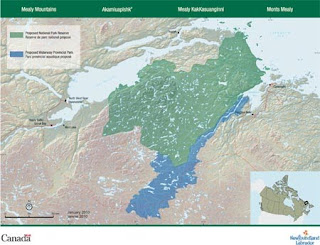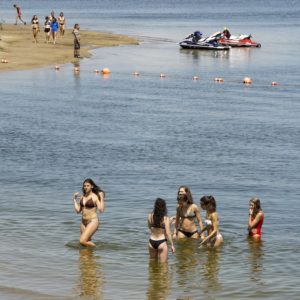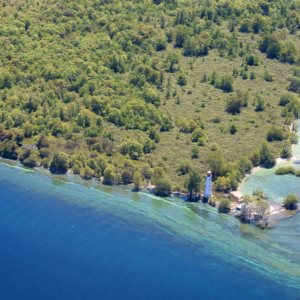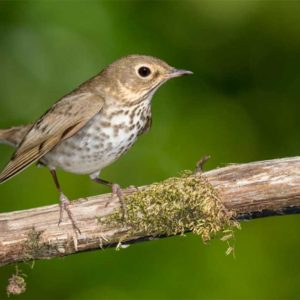3 out of 7 is still a victory for avian conservation
 The South Growswater Bay Coastline IBA, Cape Porcupine IBA and Tumbledown Dick Islands and Stag Islands IBA all fall within the recommended boundaries for the new national park. However, it appears that only the offshore islands of the South Groswater Bay IBA are inside the park boundary, leaving the mainland coastal sections of this IBA unprotected.Bird species to benefit from strong habitat protection in the above IBAs include: Common Eider, Harlequin Duck, Black Scoter and Surf Scoter, as well as other waterfowl. Continentally or globally significant concentrations of these species are present in the IBAs at different times during the summer; Harlequin Duck and Common Eider breed in the IBAs, while the Scoter species congregate there when moulting.
The South Growswater Bay Coastline IBA, Cape Porcupine IBA and Tumbledown Dick Islands and Stag Islands IBA all fall within the recommended boundaries for the new national park. However, it appears that only the offshore islands of the South Groswater Bay IBA are inside the park boundary, leaving the mainland coastal sections of this IBA unprotected.Bird species to benefit from strong habitat protection in the above IBAs include: Common Eider, Harlequin Duck, Black Scoter and Surf Scoter, as well as other waterfowl. Continentally or globally significant concentrations of these species are present in the IBAs at different times during the summer; Harlequin Duck and Common Eider breed in the IBAs, while the Scoter species congregate there when moulting.
IBAs falling outside the new protected areas’ boundaries are The Backway IBA, Goose Brook IBA, Gannet Islands IBA and the Northeast Groswater Bay IBA. While the Gannet Islands IBA is actually protected as part of the provincial Gannet Islands Ecological Reserve, safeguarding habitats for globally significant concentrations of breeding Atlantic Puffin, Razorbill and Common Murre, habitats for species found in the remaining IBAs will not see stronger protection. Species found in the ‘unprotected’ IBAs include Canada Goose (during migration), Atlantic Puffin and Razorbill (globally significant concentrations), Leach’s Storm-Petrel (west Atlantic population) and both Common and Thick-billed Murres.
The Migratory Birds Convention Act protects most of Canada’s bird species and their nests from harm, but fails to protect their habitat outside of designated Migratory Bird Sanctuaries (and even within them, any “protection” is weak). Protected areas such as National Wildlife Areas, Marine Wildlife Areas, National Parks, National Marine Conservation Areas and Marine Protected Areas can protect habitat for a variety of different bird species on land, in aquatic environments and offshore.
Find out what you can do to help secure habitat protection for all of Canada’s IBAs by visiting the IBA Canada website.
Map courtesy of Parks Canada and Newfoundland & Labrador Environment and Conservation



